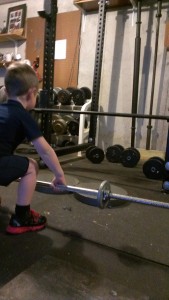General 4-6 Week Set up
|
Mon,Wed,Fri |
Tue, Thur |
Saturday |
Sunday |
| Protein |
.95-1.2XLBM |
.95-1.2XLBM |
.95-1.2XLBM |
.95-1.2XLBM |
| Carbs |
.425-.5XLBM |
.75-.85XLBM |
1-1.2XLBM |
1-1.2XLBM |
| Fat |
.4-.5XLBM |
.4-.5XLBM |
.4-.5-XLBM |
.4-.5XLBM |
(LBM)=Lean Body Mass
Things to Monitor
- Morning weight
- Average Weight week to week
- BF% every Saturday AM along with measurements calipers/tape
- Strength On Monday and Tuesdays workout
- Sleep hours a night/Stress level
Programs are usually set up as follows
|
Lift |
Sets |
Reps |
Weight X Reps |
Rest Interval |
Tempo |
|
| A1 |
Bench Press |
3 |
10-12 |
|
90s |
40X0 |
|
| A2 |
Pull up |
3 |
10-12 |
|
90s |
40X0 |
|
| B1 |
Dips |
3 |
12-15 |
|
30s |
30X0 |
|
| B2 |
Inc Curl |
3 |
12-15 |
|
30s |
30X0 |
|
| B3 |
Leg Raise |
3 |
10-12 |
|
60s |
30X0 |
|
- A1, A2 is a super set so you will do the A sets back to back Bench Press then to Pull ups
- Sets designate how many times you will repeat an exercise
- Reps or rep range is the designated number of times you will lift the weight
- Weight X Reps is where you will write the weight and the reps 100X10X10X10
- Rest interval (RI) is the designated amount of time you will rest on a lift or between lifts
- Tempo designates the speed of the lift 41X1
4 is the negative also known as the eccentric where the active muscle is lengthening
1 is the pause in the lengthened position (in the hole or the bottom of a squat,bench)
X is the positive also known as the concentric phase when the active muscle contracts/shortens
1 is the pause at the top position usually the most mechanically advantageous position.
7. B1,B2,B3 are a triset and would follow the A sets

Typically the deadlift is the most amount of weight a person is going to lift on any barbell movement, Since the load on deadlift can be so heavy in a compound movement there are many things that can go wrong. Specifically the upper back not being able to sustain a load that the lower back glutes and quad can. Watching most powerlifters this tell tale strength/mechanical deficit is adopted in max effort pulls.
A lot of times “would be lifters” eyes and or pride are a bit bigger than their spinal integrity. We have all been cursed by pride at one time in our lives. The problem with a strength deficit for upper back posture is that it will play into lower back posture and create a domino effect vertebra by vertebra. This will also happen in back squat though not always the same issue, but you will see the shoulders round forward the elbow flare back in most failures on back squat. The weight tends to go on the toe because of upper body posture. Suffice it to say the top of the deadlift is the area where the upper back is at it’s most mechanically advantageous position. After you travel over the knee you will often witness the shoulders protract as the bar moves more outside the body into the least advantageous position.
Approaching this situation “Kusian Deadliftnomics” pun intended theorizes that the best way to correct the deficit is top down vs bottom up. Looking at similar nature of olympic movements it can be inferred that utilizing top down progression would be beneficial for snatch and clean when mechanics are lacking. More to come…
Forging Strength, Refining Power
